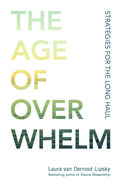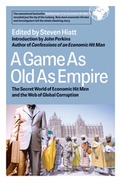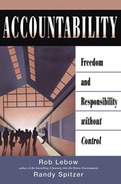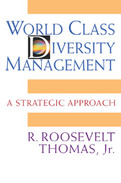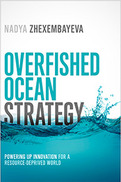2018
The money myths end here.
We don't need to choose between creating meaningful wealth for ourselves and our families today, or supporting social movements creating a better tomorrow. We don't all need to become certified financial "experts" to be economically empowered and make a real difference in our communities. And we're far from powerless when it comes to changing the financial system, just because we don't happen to belong to the 1%. Quite the opposite.
Financial activism is how everyday people radically reimagine money as a tool for widespread well-being, instead of a weapon of absurdly increasing inequality. It's the antidote to traditional finance that evokes confusion, trauma, and (in the best-case scenario) straight-up boredom. It's how we-the underestimated-collectively resist systems that cause harm to people and the planet for the sake of profit, reclaim wealth that's been stolen, and redesign our relationships with capital and one another, in ways big and small.
Going beyond tried financial literacy, The Financial Activist Playbook offers eight accessible, actionable, "choose-your-own-adventure" strategies for readers to experiment with. Drawing on timely insider knowledge from the worlds of impact investing, social justice, and more, Rashid illuminates a treasure trove of stories: demonstrating how people power can flow big bucks out of extractive industries, and into the economy of care and abundance we deserve.
Playbook readers will be equipped to start visualizing and influencing the unique networks of wealth all around each of us, with strategies like
- Shifting collective budgets and bank dollars;
- Flexing our role as everyday philanthropists;
- Leveraging the magic of community investment;
- And so much more.
With chapters spotlighting how specific countries around the globe have been subverted, A Game As Old As Empire uncovers the inner workings of the institutions behind these economic manipulations. The contributors detail concrete examples of how the “economic hit man game” is still being played: an officer of an offshore bank hiding hundreds of millions of dollars in stolen money, IMF advisers slashing Ghana's education and health programs, a mercenary defending a European oil company in Nigeria, a consultant rewriting Iraqi oil law, and executives financing warlords to secure supplies of coltan ore in Congo. Together they show how this system of corruption and plunder operates in real life, and reveal the price that the rest of the world must pay as a result.
Most important, A Game As Old As Empire connects the dots, showing how the various pieces of this system come together to create the world's first truly global empire.
• Builds on the shocking picture of worldwide economic corruption first presented in John Perkins' Confessions of an Economic Hit Man
• Features a dozen chapters detailing contemporary examples of how the economic hit man game is played around the globe
John Perkins’ controversial and bestselling exposé, Confessions of an Economic Hit Man, revealed for the first time the secret world of economic hit men (EHMs). But Perkins’ Confessions contained only a small piece of this sinister puzzle. The full story is far bigger, deeper, and darker than Perkins’ personal account revealed. Here other EHMs, journalists, and investigators join Perkins to tell their own stories, providing the first probing and expansive look into this pervasive web of systematic corruption.
With chapters spotlighting how specific countries around the globe have been subverted, A Game As Old As Empire uncovers the inner workings of the institutions behind these economic manipulations. The contributors detail concrete examples of how the “economic hit man game” is still being played: an officer of an offshore bank hiding hundreds of millions of dollars in stolen money, IMF advisers slashing Ghana’s education and health programs, a mercenary defending a European oil company in Nigeria, a consultant rewriting Iraqi oil law, and executives financing warlords to secure supplies of coltan ore in Congo. Together they show how this system of corruption and plunder operates in real life, and reveal the price that the rest of the world must pay as a result.
Most important, A Game As Old As Empire connects the dots, showing how the various pieces of this system come together to create the world’s first truly global empire.
2002
- Coauthored by Rob Lebow, author of the bestsellers A Journey into the Heroic Environment (over 220,000 copies sold) and Lasting Change (over 75,000 copies sold)
- Presents a more effective and humane alternative to "control-based" management practices-the only option that most organizations think they have
- Real-life examples reveal the benefits of this new approach to management
R. Roosevelt Thomas begins by laying out his Four Quadrant model, which encompasses all core diversity strategies: managing workforce demographic representation, managing demographic relationships, managing diverse talent, and managing all strategic diversity mixtures. He analyzes the goals, motives, approaches, accomplishments, and challenges associated with each quadrant, as well as the paradigm or mindset that lies behind each quadrant's express purpose.
Having laid out this broad range of strategies, Thomas shows how to realize them through the Strategic Diversity Management Process™, by far the most effective method for implementation. A detailed case study of CEO Jeff Kilt—a fictional composite of the many executives Thomas has worked with—effectively illustrates the complexities encountered when working with each of the Four Quadrant strategies in the real world.
This book offers a comprehensive blueprint that will enable leaders to address any diversity issue (not just race or gender) in any setting, anywhere in the world. Most important, it proves that a world-class standard of diversity management is indeed a possible and achievable goal.
-
Copublished with the American Society of Association Executives (ASAE)
-
Advances the field by providing a unified framework and terminology and spelling out exactly what needs to be done to build world-class diversity management capability
-
Identifies optimal implementation approaches that can be used anywhere, anytime
With demographic shifts and globalization transforming the nature of relationships, interactions, and decision making, excellence in diversity management is more important than ever. However, the field of diversity has no established standard for evaluating what constitutes best practices, nor has there been any agreement on what the most fundamental philosophies, principles, and concepts areuntil now. In this pioneering book R. Roosevelt Thomas, one of our most distinguished diversity theorists and practitioners, proposes a framework that will enable the development of a truly world-class diversity management capability. It was the development of such standards in manufacturing that enabled companies to strategically pursue excellence in this area.
A world-class approach to diversity management must be applicable anywhere in the world, be able to address any possible issue, facilitate comparison of different concepts and practices, and focus on the entire field of diversity rather than specific dimensions such as race or gender. These requirements are amply met by Thomass Four Quadrant model and his Strategic Diversity Management Process.
Thomas first analyzes each of four quadrantsmanaging workforce demographic representation, managing demographic relationships, managing diverse talent, and managing strategic mixturesexploring the goals, motives, approaches, accomplishments, and challenges associated with each. And he reveals the unrecognized paradigm or mind-set that lies behind each quadrants express purpose.
Once he has laid out the broad range of diversity management strategies, Thomas discusses how to realize them. He offers an overview of the Strategic Diversity Management Processby far the most effective framework for implementation. He also examines the on-the-ground dynamics of implementing each of the strategies and their associated paradigms by incorporating a case study of a CEO, a composite of the many executives Thomas has worked with.


